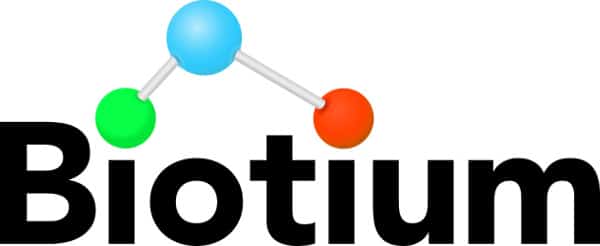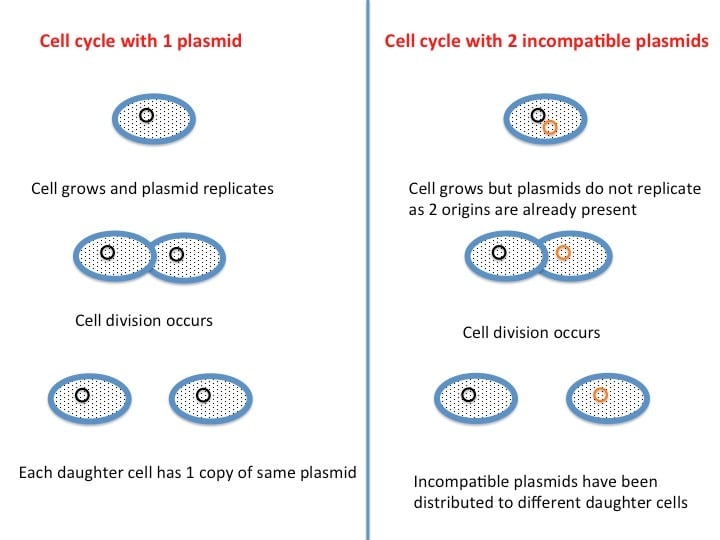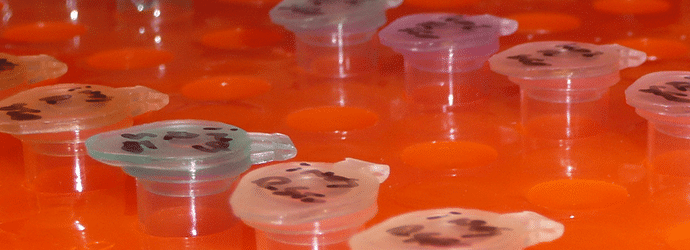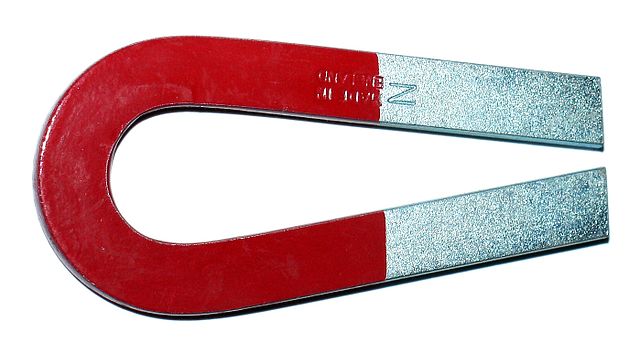How can you avoid the perils of exposing DNA to UV light during the cloning procedure? Use an alternative DNA stain! Ethidium bromide is not your only option. In this article, we will compare the available DNA stains that can be used in electrophoresis to clarify the options available to you.
Ethidium Bromide
The classic DNA stain. Ethidium bromide (EtBr) is a flat molecule that fits between adjacent base pairs (intercalates) in the DNA double helix. It has UV absorbance maxima at 300 nm and 360 nm and can also absorb energy from nucleotides excited at 260 nm. The absorbed energy is emitted as orange/yellow light at 590 nm. The fluorescence of EtBr is significantly higher when intercalated than it is in aqueous solution.
Protocol: Can be used in the gel at or as a post-stain at a concentration of 0.5 mg/L
Detection: UV light
Sensitivity: Can detect bands of 1–5 ng
Toxicity: Toxin, mutagen, teratogen, and carcinogen according to a variety of tests but effects on higher organisms have not been proven (see here)
References: Karsten, U. and Wollenberger, A. Anal. Biochem. 77, 464-470, (1977)
Methylene Blue
Methylene blue is a member of the thiazin family of dyes that ionically bind to DNA and RNA. Because its interaction with DNA/RNA is weak, methylene blue is not a very sensitive stain. However, it has the advantage that is detectable in the visible range. Destaining in water may be required for maximum sensitivity.
Protocol: Post strain only, in 0.025% (w/v) methylene blue in water.
Detection: Visible light.
Sensitivity: 40–100 ng bands are reported to be detectable after de-staining.
Toxicity: Non-mutagenic. Somewhat toxic if ingested.
References: Yung-Sharp, D. and Kumar, R. (1989) Technique. 1 (3) 183-187.
Crystal Violet
Crystal violet intercalates into DNA in a similar manner to ethidium bromide but is less mutagenic. Its major advantage is that it is detectable in the visible range—so, no need for UV exposure.
Protocol: Use in gels at a concentration of around 1.2 mg/mL
Detection: Visible light
Sensitivity: 100–200 ng bands are reported to be detectable
Toxicity: Mutagen (less so than ethidium bromide)
Reference: Rand, K.N. Elsevier Trends Journals Technical Tips, Online, T40022, 1996
SYBR Safe
SYBR safe is a commercial DNA stain manufactured by Invitrogen. It is marketed as less harmful than ethidium bromide, but this is debatable. Its major advantage is that it is as sensitive as ethidium bromide but does not require UV light for visualization.
Protocol: SYBR safe is used as an in-gel stain only. It is supplied in ready-made buffers so the working concentration is unknown.
Detection: For visualizing fragments required for downstream applications, the best (although more expensive) option is to use a blue light box as the wavelengths used do not cause DNA damage. UV-transilluminators can also be used, although specific filters may be required.
Sensitivity: As sensitive as ethidium bromide – bands of 1-5ng should be detectable.
Toxicity: Documented as less mutagenic than ethidium bromide, but its acute toxicity is higher
Reference: Invitrogen’s SYBR safe product page
Gel Red
Gel Red is a commercial DNA stain manufactured by Biotium. It is marketed as being the safest, most sensitive, and most robust nucleic acid gel stain. Also, it is less mutagenic than ethidium bromide and more stable in storage than SYBR safe. Like ethidium bromide, Gel Red is visualized using UV light.
Protocol: Gel red can be used as a post-stain or in-gel stain. It is supplied in ready-made buffers so the working concentration is unknown.
Detection: UV: excitation at 300 nm, emission at 595 nm—so conventional UV transilluminators are sufficient.
Sensitivity: Bands of 0.25 ng can be detected.
Toxicity: Less mutagenic than ethidium bromide.
Reference: Biotium’s Gel Red product page







